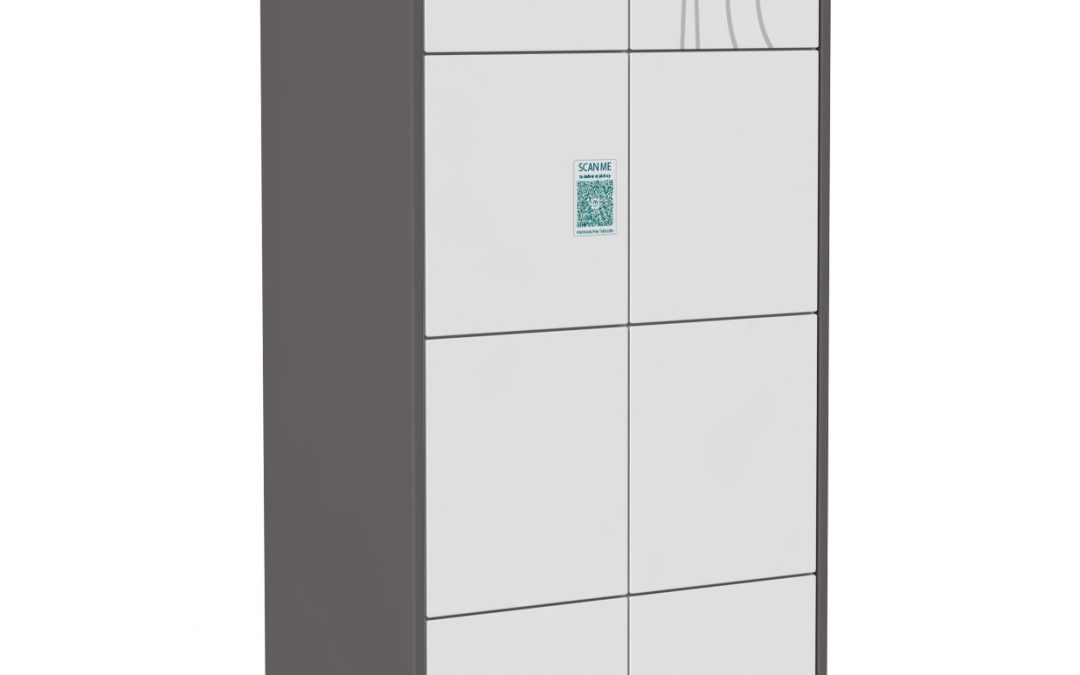Minnow Technologies’ loT-enabled food delivery and pickup stations, or “Minnow Pods,” are food delivery/pickup stations integrated with its unique QR codes and technologies. The company, founded in 2017, propelled its growth on the wings of COVID-19, and its new manufacturing partnership with Hatco allows significant growth in the foodservice realm, but also in office, institutional and residential buildings where hungry people school.
 “We decided to pivot over to restaurants because restaurants really had to have a better way to manage their takeout,” says Minnow Vice President of Brand and Growth Marketing Christopher Stanvick. “Having a pod allows you to make sure food is going to the right customers, being picked up by the right delivery service, and then, of course, the food is still being insulated and secure before it’s picked up. The pandemic accelerated the digital transformation that was happening, that we’ve all experienced in our lives.”
“We decided to pivot over to restaurants because restaurants really had to have a better way to manage their takeout,” says Minnow Vice President of Brand and Growth Marketing Christopher Stanvick. “Having a pod allows you to make sure food is going to the right customers, being picked up by the right delivery service, and then, of course, the food is still being insulated and secure before it’s picked up. The pandemic accelerated the digital transformation that was happening, that we’ve all experienced in our lives.”
To use the Minnow Pod, a delivery driver walks up to the pod and scans the QR code with their smartphone, which allows them access to make a delivery to the pod. Then, the driver puts in the customer’s information, closes the door and the customer receives a message that their order has been delivered. After that, the customer can retrieve their order at leisure using the same QR code.
“The greatest thing about our model is that you can get food delivered from any restaurant and, wherever there’s a pod, you can get it delivered to that pod. It’s the ability to just get control over your time as well.”
Minnow pods are paid for by the apartment complex, college campus or office building that houses them, so the financial burden on the customer and delivery agency is virtually zero. The pods can be purchased at face value or rented for periods as short as a month and as long as three years.
In June, Minnow announced an exclusive partnership with Hatco via press release. Hatco, a leading commercial foodservice and restaurant equipment manufacturer, will utilize the Minnow Pod as part of its foodservice portfolio. Hatco is incorporating Minnow’s technology and hardware, and it will now be manufacturing the pods and selling them on its site. While Hatco will be an indirect sales channel for Minnow, the pods will also be available directly through the Minnow website.
 In practice, Hatco will be reaching a broad foodservice and restaurant retail audience that Minnow would struggle catering to without a manufacturing partner. Minnow will still sell pods directly through its website, where it primarily attracts the attention of real estate owners looking to incorporate a pod to their repertoire. All such pods will be branded, “Hatco propelled by Minnow.”
In practice, Hatco will be reaching a broad foodservice and restaurant retail audience that Minnow would struggle catering to without a manufacturing partner. Minnow will still sell pods directly through its website, where it primarily attracts the attention of real estate owners looking to incorporate a pod to their repertoire. All such pods will be branded, “Hatco propelled by Minnow.”
“So [Hatco] will handle the foodservice side,” says Stanvick. “However, they’re also building pods for us that we’ll have for direct sales, and the direct sales are within real estate markets. These pods are going into commercial workplaces, tall high-rise buildings that have multiple tenants’ offices, and also multifamily buildings.”
Minnow initiated consumer interest in its office-located pods. Office workers could schedule a time for their meal to be delivered to the Minnow Pod and retrieve their order at their convenience. During the 2020 lockdowns Minnow shifted its approach. With office buildings essentially vacated, Minnow focused its attention to large-scale apartment complexes, where families and individuals were ordering delivery more than ever, and restaurants were collectively transitioning to takeout and delivery models.
“Our contact-free transactions are important,” Stanvick adds.
Minnow appeals to the common interest in “life management via smartphone,” or the desire to make recurring chores more efficient via technology. As I work from a desktop, connect to friends through a phone and order food, shuttles, parking, clothes and kitchen essentials through a series of apps, I struggle fighting the truth to this claim.
“We really just feel that making food delivery more efficient and affordable also is really going to be able to expand the market making fresher food accessible to more people. The convenience factor is huge,” Stanvick added.
The pods are not just convenient and safe for the customer retrieving orders. Minnow also claims the pick-up pods add a level of efficiency for the delivery driver, too.
“This is a much better and easier process for everyone that’s involved,” states Stanvick, “including people that are making the delivery, now they don’t have to wait to actually meet up with the customer. They can just basically go to the pod, put the food inside the pod, it’s insulated—whether it’s hot or cold—and it’ll be there when the customer wants to come down and pickup their food. So, it’s highly convenient for both.”
Because Minnow is primarily utilized by third-party delivery systems, the company is at a disadvantage for collecting customer data. With the utilization of other POS systems like Toast, Minnow will have a larger opportunity to collect consumer data through the integrated platform.
“When you’re provisioning the pod, it’s actually our software that’s being set up, and you can use that independent of any system right now or if you want to have it integrated you can integrate it with Toast and we’re looking at integration with others right now.”


